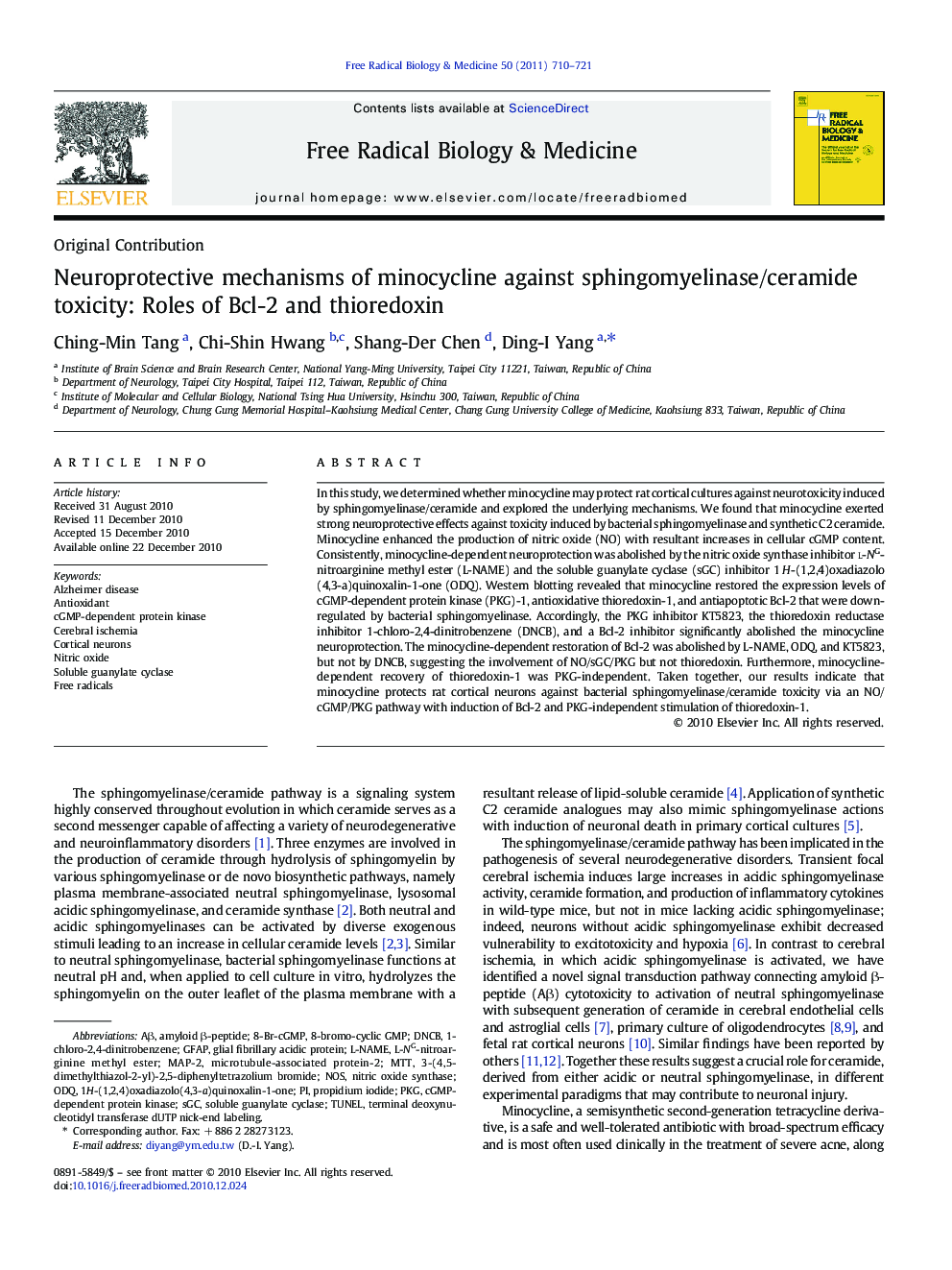| Article ID | Journal | Published Year | Pages | File Type |
|---|---|---|---|---|
| 1909227 | Free Radical Biology and Medicine | 2011 | 12 Pages |
In this study, we determined whether minocycline may protect rat cortical cultures against neurotoxicity induced by sphingomyelinase/ceramide and explored the underlying mechanisms. We found that minocycline exerted strong neuroprotective effects against toxicity induced by bacterial sphingomyelinase and synthetic C2 ceramide. Minocycline enhanced the production of nitric oxide (NO) with resultant increases in cellular cGMP content. Consistently, minocycline-dependent neuroprotection was abolished by the nitric oxide synthase inhibitor l-NG-nitroarginine methyl ester (L-NAME) and the soluble guanylate cyclase (sGC) inhibitor 1 H-(1,2,4)oxadiazolo(4,3-a)quinoxalin-1-one (ODQ). Western blotting revealed that minocycline restored the expression levels of cGMP-dependent protein kinase (PKG)-1, antioxidative thioredoxin-1, and antiapoptotic Bcl-2 that were down-regulated by bacterial sphingomyelinase. Accordingly, the PKG inhibitor KT5823, the thioredoxin reductase inhibitor 1-chloro-2,4-dinitrobenzene (DNCB), and a Bcl-2 inhibitor significantly abolished the minocycline neuroprotection. The minocycline-dependent restoration of Bcl-2 was abolished by L-NAME, ODQ, and KT5823, but not by DNCB, suggesting the involvement of NO/sGC/PKG but not thioredoxin. Furthermore, minocycline-dependent recovery of thioredoxin-1 was PKG-independent. Taken together, our results indicate that minocycline protects rat cortical neurons against bacterial sphingomyelinase/ceramide toxicity via an NO/cGMP/PKG pathway with induction of Bcl-2 and PKG-independent stimulation of thioredoxin-1.
